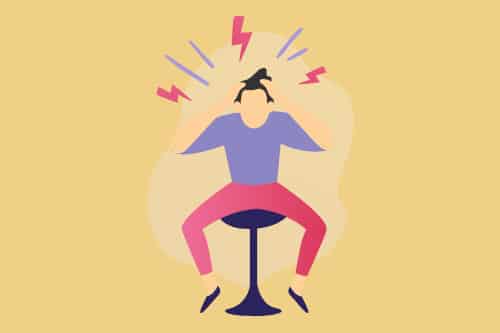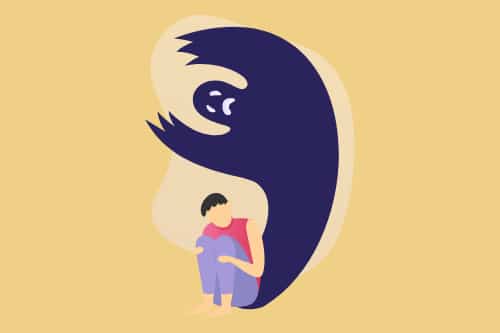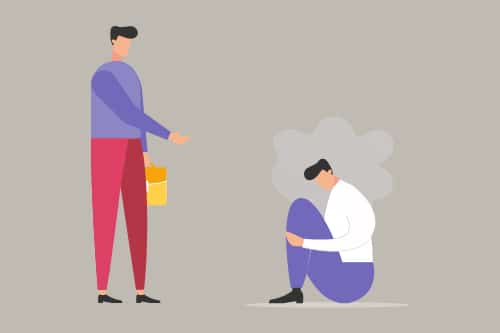How to Handle Caregiver Burnout During the Pandemic?
Summary
There are many forms of burnout. Caregiver burnout arises when you are providing constant support and assistance to a receiver who is ailing, suffering from chronic illness, or has any form of disability.
This pandemic has led people to quickly assume the role of a caregiver with limited resources at disposable. This article assists in understanding the caregiver fatigue and ways to manage it.
What is caregiver burnout?
Unprecedented time that we are currently in has taken a toll on us. The second wave brings with itself pain, increased anxiety, grief and burnout. Some are trying to help others by spreading necessary and urgent information that can help save lives. While others are on the field making sure that every person is taken care of. Times like these are not easy. Surviving through this is one of the most challenging times each one of us has faced.
As the virus spreads, it increases the need for caregivers. Each one of us is in some ways supporting our loved ones and even strangers! Most people are taking care of people around them who are either battling COVID-19, and other illnesses such as cancer & heart diseases.
Caregivers are individuals who take care and support others physically, emotionally and socially. Taking care of aging parents, special children, people with disabilities or with chronic illness; also fall under this category. Although caregiving can be rewarding, usually caregivers undergo extreme prolonged stress which affects their health.
Caregiver burnout is categorised as a state of total physical, emotional and mental exhaustion. This happens due to multiple demands, lack of resources, less energy and/ or lack of support. There are many factors that may contribute to caregivers experiencing a burnout.
First factor is the ambiguity regarding your role and how to best support the person, especially as many are not prepared for such responsibilities.
Second factor is the lack of or limited resources such as money, professional support, skills, time, hospitals or hospice and the external environment stability. In the present day, this factor is a major contributor to burnout.
Third factor is the nature of illness. Terminal, long-lasting illness and disability can lead to putting in more hours and resources which can lead to caregiver burnout.
Fourth factor is the workload that you may experience. It can get tiring to juggle between caretaking, managing bills & medicines, arranging appointments along with managing your own life.
Signs and symptoms of caregiver burnout
Identifying signs of caregiver burnout can help you manage them. Knowing these signs can assist in preventing or recognising it early before they lead to a burnout stage. Here are some signs:
- Physical exhaustion: Constant body aches, fatigue, feeling tired, frequent debilitating headaches
- Weak immune system: Falling constantly ill or feeling unwell
- Changes in appetite: Eating too much or very little causes changes in weight
- Sleep concerns: Changes in sleep patterns, distrubed sleep, or unfulfilling sleep
- Isolation from others: Avoiding family members, friends, or coworkers. Not replying to messages/calls. Secluding from events and virtual meetups
- Loss of interest: Losing interest in activities or tasks previously enjoyed. Lack of motivation to resume hobbies or even day-to-day activities
- Anxiety & depression: Constantly worrying about the patient, imagining the worst, and/or overthinking
- Emotional changes: Feeling irritated, frustrated, lashing out, and getting into frequent arguments. Feeling worthless, hopeless and helpless
- Neglect of your own health & priorities: Not taking breaks, not following basic self-care and disregarding other responsibilities
Are you undergoing caregiver burnout? Heart it out with a therapist here.
Stages of Caregiver burnout
Prolonged stress, juggling between different tasks and responsibilities as a caregiver can lead to burnout. Putting yourself as a least priority can lead to a faster weariness, to a state of collapse. It becomes important to understand the stages leading to prostration to take precautionary measures.
Stage One: Caregiver stress
Stress arises due to a sudden shift in the role of a caregiver. Handling the news, understanding treatment, gathering resources can lead to extreme stress and worry. Along with stress, a caregiver might feel frustrated with the system and the process.
Stage two: Caregiver burnout
As overwhelming feelings continue, prolonged stress leads to a state of breakdown. Neglecting of self in the process of caregiving, having no or limited support and isolation may increase.
Stage three: Compassion Fatigue
Compassion fatigue is a state of emotional and physical collapse where the caregiver/ supporter has reduced ability to empathize towards the receiver. It is a secondary stress response and causes severe emotional distress.
Ways to manage caregiver burnout
#1 Emotional Regulation
As a caregiver, you undergo different emotions. It’s important to recognize, accept, and work through these emotions. Some common emotions are guilt, frustration, disappointment, resentment etc. Healthy ways of outlet like art, journalling, meditation etc. can help in channelizing.
#2 Self care
It is important to prioritize your health along with taking care of other(s). You cannot pour from an empty cup. Your health and wellbeing are equally important. Some self-care strategies can look like eating healthy food, following a routine as much as possible, regulating, and getting enough sleep.
#3 Seek Support
Caregiving is not an easy job that can be handled alone. Reach out to others for help. During pandemic this can look like having virtual emotional support, financial support, reducing the number of commitments at home and/or office.
#4 Physical movement
Despite the fatigue and weariness, it is essential to move your body and give it exercise. This helps in flexing the muscles, releasing the pain and aches. Some ways to get enough movements are climbing stairs, exercising, dance, stretching, etc.
#5 Support groups
Support groups are a great way to connect with individuals going through similar experiences. This allows you to vent and share your experiences, learn or improve on your caregiving skills and strategies, and make you feel less lonely.
#6 Professional help
Therapist helps you express and manage emotional changes you may experience as a caregiver. They can help you in finding ways to reduce burnout, start self care and make small helpful changes in your life.
Conclusion
With the increase in need for health care support due to COVID-19, most of us are taking care of family, friends and close ones. This makes it crucial to understand the impact it creates and how to prevent it from causing a fatigation. Taking care of own health and wellbeing reduces the burden and facilitates better care to receivers.
Frequently Asked Questions (FAQs)
A. Guilt is a common emotion that arises during caregiving. Guilt can come when you think you are not doing enough, give less priority to other aspects of your life (e.g. spouse, parents, children or work) or when you want to focus on yourself. You may think that giving time to yourself is selfish, when others are suffering and in pain. Acknowledge that the feeling is present. Understand that this feeling is limiting and draining you. Inability to take care of yourself will result in you not able to support others that way you wish to. Reach out to a professional for guidance.
A. Pandemic has led to caregiving becoming more difficult. With lack of resources, uncertainty and limited access for support, it creates a feeling of loneliness, making isolation worse. Schedule virtual meet-up with friends and close family, join online support groups and take part in creative workshops. Remember, you are not alone.
A. Yes. Understanding the stages, identifying the symptom can help you recognise the early stages of caregiving fatigue. Maintaining a harmony between caregiving and yourself, using helpful coping skills can assist in preventing a burnout stage of caregiving.









